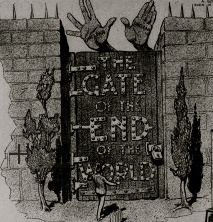SAN FRANCISCO'S HOUSE OF PESTILENCE: CONTAGION, STIGMA AND EXILE
Quarantine and isolation establishments popularly known as pest houses have a long past. Since antiquity, they represent basic public health instruments employed for voluntary or coerced--spatial as well as social segregation. Both were designed to control the movement of people suspected or suffering from contagious diseases. Their goal was to save lives and preserve social order by preventing or hindering disease transmission and spread. Paradoxically, these stigmatized institutions not only displayed crass acts of inhumanity but also spurred notable deeds of charity and empathy.
This new project focuses on a particular institution, the San Francisco Pesthouse, created during the 1850s to deal with smallpox victims, until its final closure and destruction in 1923. To some extent, this work can be considered a prequel to my recent publication, Plague, Fear and Politics in San Francisco’s Chinatown, (Baltimore: Johns Hopkins University Press, 2012).
Unlike other large nineteenth-century American communities, San Francisco was confronted during and after the Gold Rush with a large number of persons arriving from Asia. Rapid urbanization, economic change, and the dislocations created by Chinese immigration caused profound social anxieties. City residents expressed an exaggerated sense of vulnerability, clearly out of proportion to the risks involved. Fears that newcomers secretly harbored diseases endemic in their countries of origin were widespread.
In contrast to other institutions of confinement such as hospitals, asylums and prisons, historians have seldom examined quarantine stations and pest houses. Besides attempting to uncover a chapter of city history hitherto ignored, this broader study aims to expose some of the psychological, ideological, and pragmatic reasons for segregating the sick from healthy people at the junction of biology, culture, politics, race, and nativism. Because many permanent pest house inmates were Chinese suffering from syphilis and leprosy, the narrative examines their plight in greater detail with the help of contemporary clinical histories. Attention to specific establishments within their local context expands the historical imagination, allowing us to more easily perceive and reflect on broader issues, especially relationships between environment, race, class, citizenship and morality with clear implications for America’s present and future.
